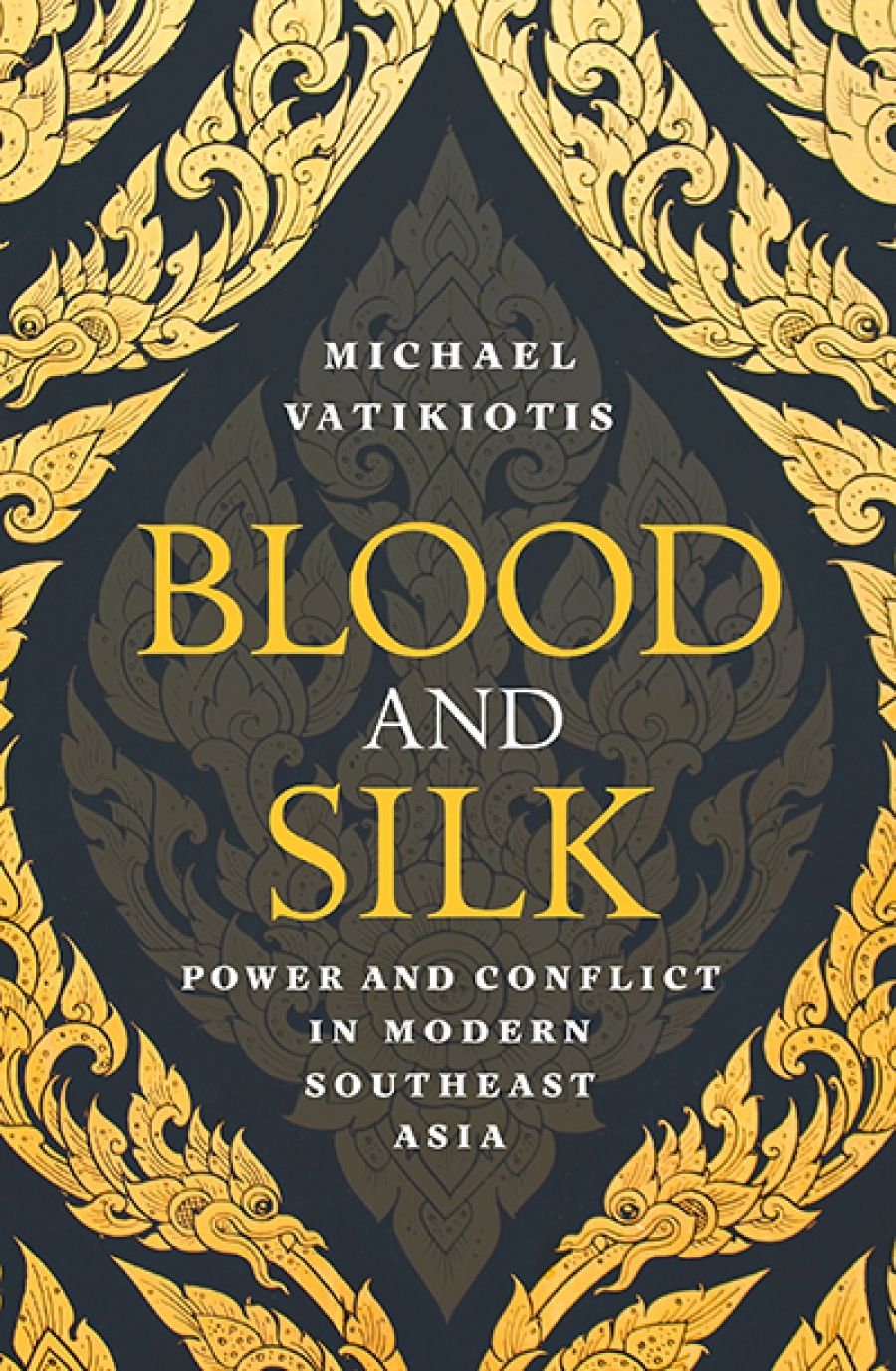
- Free Article: No
- Contents Category: International Studies
- Custom Article Title: David Fettling reviews 'Blood and Silk: Power and conflict in modern Southeast Asia' by Michael Vatikiotis
- Review Article: Yes
- Online Only: No
- Custom Highlight Text:
Australians, Chris Bowen lamented recently, pay lip service to Asia. While millions of us visit every year, it is too easy to skim across the region’s surface. Few Australians speak Asian languages; most know little about our colossal neighbour Indonesia, let alone other ASEAN countries. Making matters worse, there ...
- Book 1 Title: Blood and Silk
- Book 1 Subtitle: Power and conflict in modern Southeast Asia
- Book 1 Biblio: Weidenfeld & Nicolson, $32.99 pb, 352 pp, 9781474602013
If Blood and Silk’s subject is important, so is its message. Vatikiotis tells us that the region is chronically unstable: on present trends, things are unlikely to get better, and may in fact get considerably worse. Confronting conventional tourist images of a ‘tropical Arcady’, Vatikiotis describes a Southeast Asia ‘plagued by ... demi-democracy’, and caught in ‘a tragic mandala of perpetual violence’. His book is scathing of the region’s political élites. By patronage and corruption they pursue their own interests over their people’s. They also abuse human rights with terrible frequency: Vatikiotis writes movingly of murdered activists and journalists. Flawed political systems lacking strong institutions, often with incestuous links to security and military forces, enable such behaviour.
The headlines being generated by the world’s current populist wave threaten to further divert attention from Southeast Asia. Yet Vatikiotis sees the ASEAN region, too, struggling with opposing impulses of open versus closed, modern versus traditional. In Southeast Asia, ‘unmet popular aspiration’, combined with unresponsive political systems, is producing a more populist, illiberal politics.
Historically, the region has been open to trade, ideas, and people: this openness has produced dynamism and diversity, but also insularity among communities and persistent anxiety about outside influxes. Nationalistic governments take tourist and investor dollars while snarling about ‘sovereignty’. To channel grievances, politicians are scapegoating the region’s many racial and religious minorities. In the 1990s, Vatikiotis writes, amidst ‘End of History’ euphoria about liberal democracy’s triumph, his pessimistic attitude to Southeast Asia’s prospects was unfashionable. Now the region appears distinctly less anomalous.
Vatikiotis explores how many Southeast Asian ‘strongmen’ manage to ‘legitimise’ themselves ‘in ostensibly democratic settings’. Popular desire for security assists them. Regional memories of crisis remain fresh; socioeconomic gains are real but fragile. Vatikiotis quotes a former Thai minister after Thais voted for a military junta-designed constitution, which effectively discarded democracy: ‘the people want security, they seem ... happy’.
The region has seen repeated political false dawns. A wave of unrest in the 1970s toppled Philippine dictator Ferdinand Marcos, but fizzled elsewhere. The Asian Financial Crisis brought hopes of transformation, but Vatikiotis calls progress ‘ephemeral’. He notes that the growth of middle classes has not been an unambiguously liberalising force. Material gains have made Southeast Asians ‘better educated, better informed, and better off’, but have also given them a stake in the status quo.
Rising economic inequality Vatikiotis identifies as a significant destabilising force in the region. It is driving popular protest: Thailand’s red-shirt versus yellow-shirt conflict is essentially between economic haves and have-nots. It is also ‘tinder’ for racial and religious antagonism. When Indonesian dictator Suharto fell amid economic crisis in 1998, anger immediately led to the killings of Indonesian Chinese. Given that history, the wave of hate which in 2017 saw Jakarta’s ethnic Chinese governor jailed – on which Vatikiotis’s book concludes – is a frightening development. Complacent ideas that Southeast Asia will escape Middle Eastern-style sectarianism Vatikiotis says need to be revised: the possibility of catastrophe is real.
Generally, Vatikiotis astutely balances his coverage of ten diverse countries, drawing out differences and similarities. Vietnam feels slightly underrepresented, given its size and significance, but also because it looks better placed to avoid some if not all of the maladies Vatikiotis identifies. Faster economic growth is bringing more gains to relatively more of society, and racial tensions are less pronounced.
 Michael Vatikiotis
Michael Vatikiotis
For Australians, an attentive reading will suggest that closer Southeast Asian engagement will provide no easy solution to Australia’s strategic policy challenges in this age of ‘America First’. Vatikiotis’s book is filled with reminders of what Southeast Asian engagement can constitute. He describes, for example, meeting Indonesian military man and human rights violator Prabowo Subianto in 1989 East Timor. When ‘emaciated Timorese prisoners’ served Vatikiotis tea, it spilled everywhere as they ‘trembled with fear’. Later, Vatikiotis outlines why Prabowo, now a populist politician, has a sizeable Indonesian following, which could plausibly make him president. Certainly, Australia should more closely engage South-east Asia, but no aspect of it will be easy.
For anyone hoping to better know Southeast Asia, this is a valuable book.


Comments powered by CComment